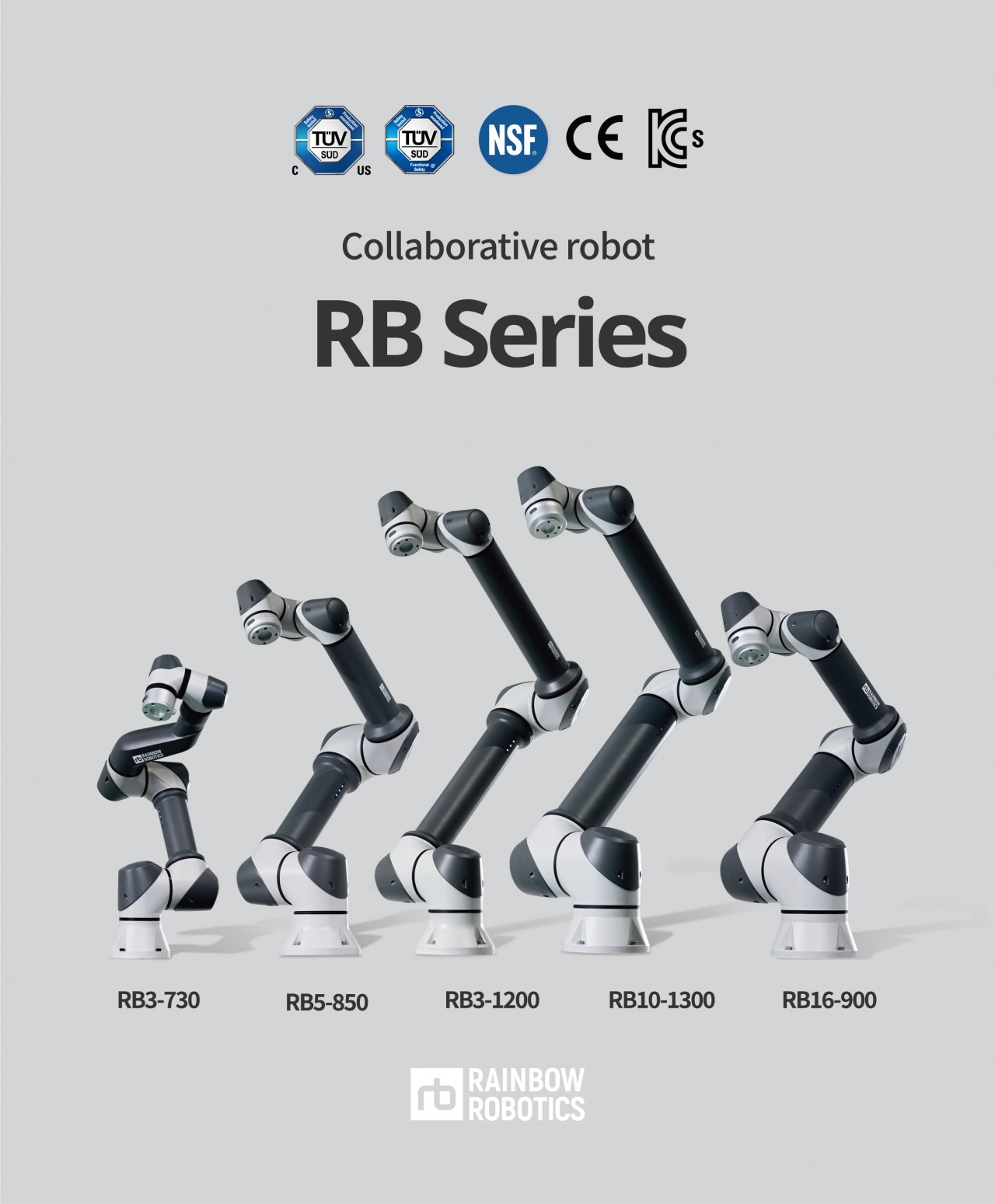 |
Rainbow Robotics’ collaborative robot RB Series (Rainbow Robotics) |
Rainbow Robotics, in which Samsung Electronics recently secured a total of 14.99 percent stake, is seeking to secure a footing in the US as it participates in this week’s US Automate, North America’s largest automation trade show.
The company plans to showcase its five collaborative robots of the RB Series which offer approximately 50 percent less production cost than rivals as it uses its own parts such as actuator, encoder, brake and controller.
During the networking event on the sidelines of the exhibition, Rainbow Robotics looks to secure additional sales distribution channels in the US.
Last month, it agreed with Cascara Robotics, a Michigan-based robotics and automation solutions company, to use its sales network.
The company has also forged business with several robotics companies in North America, including automated printing service provider Driver Print and Wingman Cobot, a robotics company for food and beverage services, both in the US. Rainbow Robotics also has business with Canada’s Carmax Machinery.
In a move to secure a footing in North America, Rainbow Robotics set up an Illinois branch in Schaumburg last month to organize customer service and sales units. The company also received certifications from US Nationally Recognized Testing Laboratory and the Canadian Standards Association for its export robots redesigned for the North American market.
“Our research for local distributors in North America is proceeding ahead of schedule. We believe the Automate event will set the stage for securing more sales network,” said an official from Rainbow Robotics. “Working with other companies’ distribution channels, the company aims to boost market share in the collaborative robot business there.”
According to data from market tracker MarketsandMarkets, the global collaborative robot market is expected to grow 43.5 percent to $5.1 billion by 2025 compared to $836.2 million in 2020, fueled by a decreasing number of human workers and a surge in labor costs.







![[Today’s K-pop] Blackpink’s Jennie, Lisa invited to Coachella as solo acts](http://res.heraldm.com/phpwas/restmb_idxmake.php?idx=644&simg=/content/image/2024/11/21/20241121050099_0.jpg)